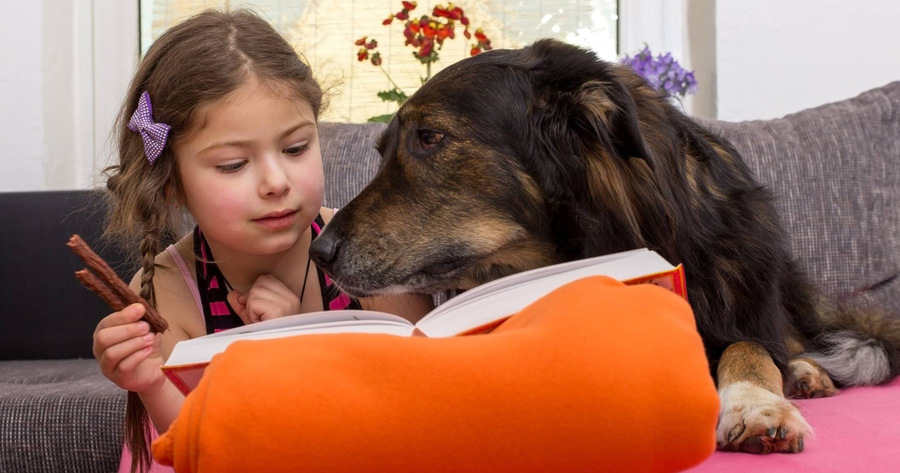Brushing the dog, throwing a ball and walking the dog are now all part of his PT that is now sprinkled with smiles and giggles.
A young woman recovering from sexual assault is asked to take the stand. Her fear is relentless. She is paired with a courthouse assigned therapy dog prior to her testimony and finds comfort in the gentle dog pressed to her side.
The word is out, and so are the dogs.
What used to be unusual is now readily accepted: dogs in places and doing things that society now sees are making a difference. Enter the intentional inclusion of dogs as a part of curriculum driven developmental and educational programs after school. Canines can offer a source of comfort and engagement that make a huge difference in our efforts to positively affect the lives of young people—in school and, especially, after school.
Young children struggling with the words on pages read with increased confidence and less effort when they are sitting next to their new reading partner with four legs.
In Missouri, Epic Pals has taken to the dogs with exceptional results.
Bringing dogs along to afterschool programs allows us to build rapport with students from the day we begin working with them. When we walk into a classroom with a dog, or even play a video of a dog, we see students' eyes light up and their faces and bodies relax. The Pawsitive Works curriculum builds on the natural connection children have with dogs and makes social and emotional learning more accessible to students by connecting important life skills—like impulse control, tolerance and the ability to read nonverbal communication—first to our relationships with dogs, and then to our relationships with people in school, family and friends.
"We love using the Pawsitive Works Curriculum and the students love it, too!" —Shelly Wood, Pals Project Coordinator
In Sandpoint, Idaho, the community youth center is going to the dogs. Youth will be going to Panhandle Animal Shelter after school to engage in lessons with dogs through the Pawsitive Works S.E.E. (Social Emotional Education) Spot program.
"We are excited to offer an opportunity to our young people to engage with animals in a meaningful way. Through the training and curriculum available through Pawsitive Works, we are equipped to help young people develop the emotional and relational awareness skills that working with canine friends can produce. " —Claire Honsinger, Executive Director of the Sandpoint Youth Center
We are "paws"itive dogs can make a difference in afterschool. Let us know how we can help you in your efforts to inspire and engage through canine assisted learning.
Written by Karen Schumacher, Executive Director, Pawsitive Works.
Photo courtesy of Agnes Sadlowka, Pawsitive Works



